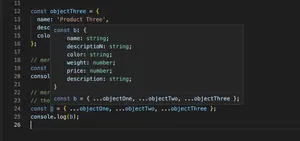Overview
The TypeScript error “Property is not assignable to string index in interface” is a common issue encountered by developers when an object’s property doesn’t match the expected type defined by a string index signature in an interface. This tutorial will explore the reasons behind this error and provide multiple solutions on how to address it.
Understanding the Issue
Before we delve into the solutions, let’s understand what the error message means. An interface with a string index signature tells TypeScript that an object can have any number of properties, and the types of the property values must conform to the specified type. If you try to assign a value of a different type to a property, TypeScript will throw this error.
Solution 1: Update the Index Signature
One way to solve this error is by updating the interface’s index signature to accommodate the property types used:
- Locate the interface triggering the error.
- Modify the index signature to match the type of the property you are trying to assign.
Code example:
interface MyInterface {
[key: string]: string | number; // Previously was [key: string]: string;
}
let myObject: MyInterface = {
propName: 'value', // This is okay
propAge: 30 // Previously threw an error, now it's fine
};
Advantages:
- Quick and easy to implement.
- Offers more flexibility with property types.
Limitations:
- Might introduce type-related bugs if not properly managed.
Solution 2: Extend the Interface
If you know the properties that will be added to an object, you can extend the original interface and add specific property types:
- Create a new interface that extends the original one.
- Add the specific properties and their types to the new interface.
Code example:
interface MyBaseInterface {
[key: string]: string;
}
interface MyExtendedInterface extends MyBaseInterface {
propAge: number;
}
let myObject: MyExtendedInterface = {
propName: 'value',
propAge: 30
};
Advantages:
- Preserves the structure and constraints of the original interface.
- Maintains type safety for added properties.
Limitations:
- Requires anticipating which properties an object will have.
Solution 3: Use a Type Assertion
You can bypass the index signature constraint by using a type assertion. However, use this with caution as it may lead to unexpected runtime errors if the object structure does not match what’s being consumed elsewhere in your code.
Use the as keyword to assert the type of the object:
interface MyInterface {
[key: string]: string;
}
let myObject = {
propName: 'value',
propAge: 30
} as MyInterface;
// or myObject['propAge'] = 30 as string;
Advantages:
- Quick way to address the type error.
- Allows you to work around the index signature temporarily.
Limitations:
- Can lead to runtime errors if used without understanding the implications.
- Reduces the benefits of TypeScript’s static type checking.
Conclusion
This tutorial provided some solutions to the “Property is not assignable to string index in interface” error in TypeScript. Adopt the solution that best fits the context of your project, keeping in mind the compromises you might be making in terms of type safety and maintainability. Hopefully, this guide will assist you in writing error-free TypeScript code!
